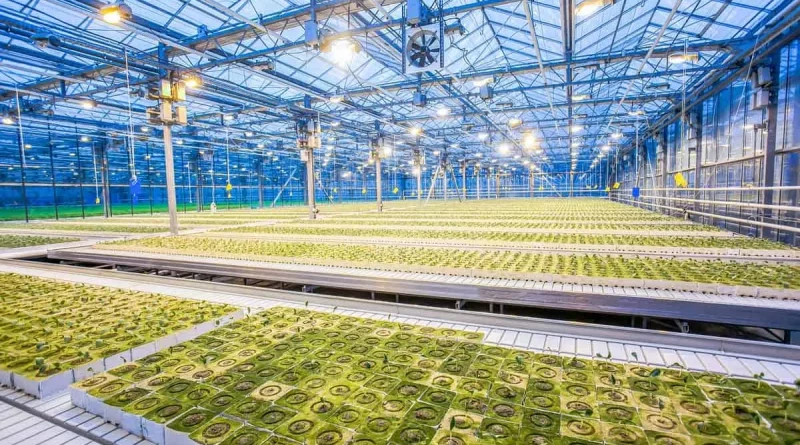5 Aquaponics Secrets: How To Build A Working Aquaponics System
In this article, we are going to show 5 aquaponics secrets you need to know to build a working aquaponics system.
Aquaponics is easy and anyone can be successful with aquaponics. It is just a matter of knowing some key information.
So can I ask you do you want:
- To grow fruit and vegetables up to ten times faster than with conventional soil methods?
- To be able to feed your family fresh organic produce year-round?
- Save money on your food bill whilst not worrying about another food scare?
All of the above is possible with aquaponics. Now you may be asking how right?
Well first let’s take a quick look at aquaponics…
What Is Aquaponics?
Aquaponics a like a mini Eco-system you can have in your backyard. You have fish in one tank and plants in another.
The fish “poop” is used to fertilize the plants and the plants filter the water for the fish. They work in harmony to do all the hard work for you.
It means you can produce organic produce year-round in your backyard thus saving you money on your food bill.
Plus as you know where your food is coming from you don’t have to worry if it is safe for you or your family.
Anyway let’s look at our 5 aquaponic secrets; so you’re on your way to having a successful aquaponics system
Aquaponics Secrets #1 – Choosing The Right Plants
With aquaponics, it’s possible to grow nearly every fruit or vegetable you can think of, however…
The fact you could grow a papaya or banana tree doesn’t mean I would recommend doing so. Staying away from plants that prefer acid or soil-based environments will make your aquaponics life easier.
I would also recommend staying away from plants that prefer higher or lower pH than neutral such as fruit and blueberries.
My advice is to look for plants that prefer a pH between 6.8 and 7.0. These plants will flourish in a basic aquaponics system allowing optimal nutrient uptake.
When it comes to sourcing plants for your aquaponics system it’s simple. You can take seeds, cuttings, or transplants from ordinary soil plants and put them in your aquaponics system (just make sure no soil is left on the roots as it may infect your system).
Aquaponics Secrets #2 – Choosing The Right Fish
Making the correct choice of fish for your system is dependent on the following criteria:
Are the fish you’re rearing for eating or strictly ornamental?
Some fish species are better for eating (Tilapia being very common in aquaponics) whilst others such as Koi carp are more suitable for ornamental purposes only.
What is your local environment?
The average temperature of the water affects the species of fish you can choose to have in your system. If you live in colder environmental conditions you could go for trout, in warmer climes such as Australia you can opt for Barramundi.
How much money do you have to spend?
If your budget is limited then we would recommend goldfish. They are hardy fish and cheap too. Mind you I wouldn’t recommend eating them. That’s why many people opt for Tilapia; they are cheap to buy and make good eating as well.
When it comes to fish I recommend keeping things as simple as you can. So only have one or two different fish species in your system. It will make your life easier and increase the chances of your aquaponics system being successful.
Aquaponics Secrets #3 – Picking The Correct Grow Bed
Having the right grow bed is vital; it’s where your plants will grow. As a beginner, I recommend using a media-based grow bed and not an NFT (nutrient film technique) or DWC (deep water culture) system.
The reasons are:
- Media grow bed system is easier to build
- A media grow bed system is easier to maintain
- The system is easier to adapt (think to expand) at a later date
- You will have increased plant choice options
- Grow bed media helps break down solids and cycle water in the process which is known as mineralization (it’s a good thing!)
Aquaponics Secret #4 – Choosing The Right Tank
Stating the obvious here but choosing the right tank is critical. Let’s take a look at size first, shall we?
As a beginner, I would recommend starting with a tank of at least 200 liters in size. This will allow for fish up to 30cm in size.
Ideally, I would say start with at least a 1000-liter tank. The bigger the tank the more leeway you have if you make a mistake and do not let it critically damage your system.
You see the bigger the tank the slower the system is affected giving you more time to correct any mistakes.
As materials, you choose to build your tank from. Make sure it will not change the pH level or make the water toxic either.
Ideally, to start you want to grow the bed volume to fish tank ratio to be 1:1. This will make life simpler. As your experience grows you can increase the ratio to 2:1.
Aquaponics Secrets #5 – Water Maintenance
Understanding the quality and makeup of your water is essential for optimal plant growth and maintaining the health of your fish.
You need to keep an eye on the following:
Temperature – I recommend choosing a fish species that can naturally adapt to the average temperature that your water will be year-round for them to thrive.
PH Level – As we stated before the optimal rate for pH level is between 6.8 and 7.0 for plants. The same is also true for the fish and bacteria in your system. You need to check your system weekly and adjust the pH accordingly.
Purity – If you are using mains water then you have to make sure there is no chlorine in before adding it to your system.
[Tip]An old trick people with aquariums use is to let the water sit overnight before adding it to the tank as the chlorine evaporates.
Oxygen levels – You cannot have too much oxygen in your system. Make sure your levels never drop below 3ppm (parts per million) ideally though it should be above 6ppm.
Aquaponics Secrets – A Conclusion
As you can see the “aquaponics secrets” are straightforward enough for a beginner to understand and carry out.





